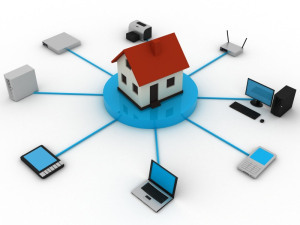
The idea of smart, connected devices is causing a stir. Retailers such as Sears and Staples are touting new connected product lines, and Microsoft has even invested in a smart bra.
While the concept may be cool in theory, will consumers embrace the technology? The Retail TouchPoints editors share their thoughts below:
Debbie Hauss, Editor-in-Chief: The fact is: there were 13 billion Internet-connected devices in 2013 and there will be as many as 50 billion in 2020, according to Cisco. I think it’s hard to predict which of these devices will catch on the quickest, although Google’s investment in Nest certainly indicates where that organization is placing its bets. On the consumer level, I think the focus will have to be on convenience and our inability to wait for anything or tolerate discomfort. If we can have it, we want the oven to turn on and be ready to cook before we get to the kitchen; we want the house to be at the perfect temperature before we get home. Smart bras that track your mood? I think I’ll stick to the mood ring.
Alicia Fiorletta, Senior Editor: I think the entire concept of connected devices, and the Internet of Things as a whole, is game-changing for retailers and consumers alike. While retailers are showing that they’re ahead of the curve, and offering solutions to address consumers’ wants and needs, consumers have access to tools that make their lives easier! Just yesterday I was able to get a glimpse at Belkin’s WeMo home automation product line. It’s interesting to see how all the products work together, and how everything can be managed effortlessly through a smartphone. However, my sister and brother-in-law had a less-than-stellar experience with a smart thermostat, so I’m not completely won over. Right now, I’ll just watch on the sidelines and see how the trend unfolds. I especially am interested in that smart bra!
Kim Zimmermann, Managing Editor: A few years ago, when i was writing about the grocery industry, Stop & Shop struggled to get people to use hand-held, in-store scanners to scan their items as they put them in the cart because they had to give up their information – specifically their frequent shopper card with all of their buying history – to gain access to the scanner. We’ve come a long way in just a few short years, and now people expect all of their devices to be Internet connected and are comfortable using their smartphones to scan items in the store, for example. When people see the value – making their lives easier, more comfortable, less tedious by making a task like food shopping go quicker – they are more likely to give up a little bit of control. But don’t take away all of their control or they will balk.
Glenn Taylor, Associate Editor: I think the popularity of smart technology will go as far as its security will take it. An issue with connected home technology is that while it is convenient, products such as smart locks, programmed lights and heating/cooling take certain manual steps out of the customer’s hands that could make some people uncomfortable. I assume a portion of connected home solutions will be programmed to give users the option to have a specific level of control, but that aspect will have to be marketed heavily to attract the skeptical consumer.
Brian Anderson, Associate Editor: The popularity and growth of connected and smart technology in the retail industry depends solely on the consumers that will be interacting with them. Like Glenn stated, the thought of losing control of certain day-to-day tasks (controlling home temperature, manually locking doors, etc.) can be a bit too much for many shoppers at the moment. However, we have seen many consumers state they would never share credit card information over the Internet when the option was first made available – and now e-commerce is considered a viable payment option for many shoppers. Only time will tell if smart technology will evolve into a bigger trend among retailers and their consumers.






